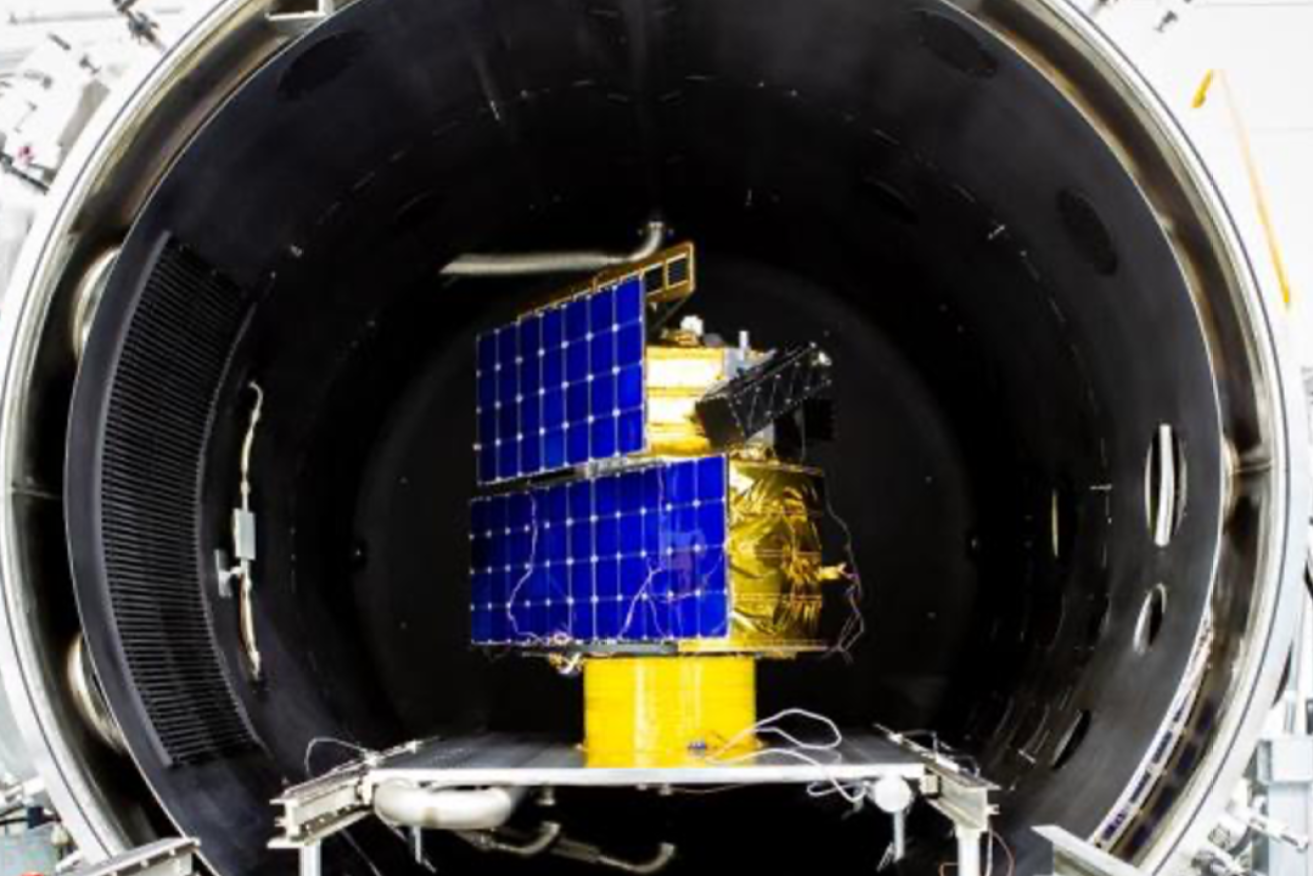Lost in space: SA company missing multi-million-dollar ‘space taxi’
South Australia’s fledgling space industry has suffered a major setback, with a multi-million dollar commercial space vehicle and payload out of contact and seemingly missing.


Australian Space Agency’s image of the Optimus satellite during the experimental campaign at the National Space Test Facility. Photo credit: Cristy Roberts, ANU
Optimus, an Orbital Servicing Vehicle (OSV) designed and manufactured by Adelaide-based Space Machines Company was launched on March 5 from Vandenberg Space Force Base in California on SpaceX’s Transporter-10 rideshare mission, aboard a Falcon 9 rocket.
It was carrying multiple Australian payloads, mostly experimental.
One week ago, the company announced on LinkedIn that it was working to establish communications with the spacecraft, but it is not known at what point communications were disrupted following the March 5 launch.
Questions were put to the company about whether the spacecraft was ‘lost’ and whether the company ever had contact with the spacecraft post-launch, but InDaily was met with a statement noting the firm was working on establishing communications.
Described by the Australian Space Agency as “the largest Australian commercial satellite to date” it was claimed by its developers to be able to “offer a unique taxi-style service in orbit, which can physically move other satellites to new positions”.
The ASA also said another key objective of the spacecraft was to “reduce space debris by extending the life of spacecraft that would otherwise be forced to shut down”.
The agency confirmed earlier last month that companies with high-tech equipment on board the Optimus included:
- The HEO Robotics Holmes Imager, a space domain awareness camera which captures high-resolution imagery of objects as they pass the Optimus spacecraft.
- The Over The Rainbow hyperspectral imager from Esper, designed to capture detailed hyperspectral images from space.
- Multiple units of the SE-1 edge computer from Spiral Blue, the most powerful in-space computer outside of a space station.
- Dandelions’ mechanical test of a hemp-based composite for space-based construction
- The Advanced Navigation Boreas X90, an Inertial Navigation System (INS) that will assist Optimus with manoeuvring and satellite docking.
- The ANT61 Brain, a world-first space-grade neuromorphic computer which will demonstrate recognition and visual inspection of satellite elements, with real-time on-board processing.
- Valiant Space’s VS-1 thruster, which will be performing numerous orbit-changing manoeuvres for SMC’s mission and is the first Australian bi-propellant propulsion system to fly to space.
- State-of-the-art printed flexible solar cell technology from CSIRO, which will be studied as a possible energy source for future space endeavours.
The company behind the Optimus project was founded in Adelaide by two directors of retail marketing company Booodl which collapsed into liquidation in late 2018, losing millions of dollars of investor’s funds. On LinkedIn, Booodl co-founder George Freney said the firm was “closed down in a way that ensured all employees and creditors were paid in full”.
The directors were Rajat Kulshrestha, now Space Machines Company (SMC) CEO, and George Freney, Co-Founder and Chief Development Officer of SMC.
Investors in Space Machines Company, which has its corporate and operations office in Lot Fourteen, are understood to include high-profile sportsmen and leading South Australian business figures.
Adam Gilmour, CEO of Gilmour Space Technologies, posted his sympathies to the Freney venture on LinkedIn on Sunday saying: “Shout out to Space Machines Company. While they keep looking for their Optimus satellite, it’s important to recognise how far they have come in designing, building, testing their technology. It was great that they took other Aussie companies with them to space, who also designed, built and tested their systems and components.”
George Freney replied: “Space is hard. It is essential that embrace the risk-taking entrepreneurs who try and do hard things.”
InDaily asked Freney for comment but was told to contact his PR team as he was “travelling and [had] a complex schedule”.
“We are optimistic about the mission and working hard to establish communications,” he said in a text message.
InDaily then approached Space Machines Company to confirm whether the spacecraft was in fact lost, and a spokesperson said: “Our dedicated mission operations team has been working tirelessly to establish and maintain communications with the spacecraft.”
“The team remains focused on accomplishing this objective and beginning the next phase of the mission for customers and partners. Each phase of the mission provides new opportunities to analyse the data and identify enhancements for future generations of our Orbital Servicing Vehicles (OSVs),” the spokesperson said.
“The ambition that fuelled the development of Optimus will continue to drive our team towards even bolder innovations in the coming years. In the next few weeks, we will be sharing some developments related to our expansion plans for our OSV fleet.
“The successful Optimus launch and deployment marks a significant milestone in establishing Australia’s growing capabilities in the space economy, and we are eager to build upon this positive momentum.”




